DID WE GO TO THE MOON?
Gerardus D. Bouw, Ph.D.There is a belief, officially taught to Cuban school children and held by some New Agers, the Hare Krishnas, orthodox Moslems, the Flat Earth Society, and now increasingly circulating among Christians, that the United States faked the Apollo moon landings. Many are the claims made by the promoters of the belief, and some of them seem quite convincing. Although space will not permit a detailed account of the claims and counterclaims, we can categorize most of them into several categories and look at a handful of particulars. Most arguments are photographic in nature. After careful examination of photos and NASA videos of all the moon landings, we conclude that there is no evidence that the moon photos and videos were faked.
Introduction
In order to analyze the claims made by the doubters, I examined, with remote control in hand, all of NASA's video tapes about the Apollo missions. The comments below are not made from inexperience. From 1959 through 1976 I developed and printed my own photos and slides. For black and white prints I used of Ansel Adams' zone system photography, where one exposes for the shadows and develops for the highlights. I learned color printing in 1965 when I worked all summer for Dr. Larry Helfer of the University of Rochester. We were looking to enhance subtle color differences in the lunar mare (lava) beds by taking color photos of the moon and printing them to enhance the color contrasts of the moon. The whole summer was spent taking and printing telescopic photos of the moon at all phases. I continued color printing, when I could afford it, for several more years. Also, I worked six months in the processing lab of a portrait studio, where, among other skills, I learned toning. In more recent years I've enhanced photos by computer. For samples of that, see the eclipse photos posted on the Biblical Astronomer web site and photos which appeared in past issues of the Biblical Astronomer which dealt with the face and pyramids of Mars.
In the course of all that, I learned photographic techniques such as dodging, which keeps shady or dark areas of a photo from getting too dark; burning in, which brings out details in over-exposed areas, keeping them from looking washed-out; retouching, staining a negative to remove dark spots and blemishes from prints; and enhancing and reducing, techniques to rescue underexposed and overexposed negatives or prints. About the only thing I didn't do was airbrushing, the opposite of retouching, but I've done that with computer prints. Lately I've been working with the computer color correcting and restoring faded color photos from the 1950s. In short, I do know a little bit about what can and cannot be done with photos in the lab and by computer.
No sooner had the first lunar module landed on the surface of the moon than a chorus of voices, most of them communists, pronounced the whole Apollo program a fake. Certainly given the poor quality live video presented on world television at the time, there is no way to tell the difference. They used slow-fading photoreceptors which made it look like background objects shone through the astronauts' bodies, at least until the memory of the receptors faded. But NASA did not stop with that original video. NASA released still photos and video tapes of each of the lunar landings. Based on these released photos, two men in particular have made a living from the negative view. They are Bill Bryan of Oregon who, in 1982, wrote a book called Moongate, and Ralph Ren who wrote two books in the mid-nineties: Was It Only A Paper Moon? and Did NASA Moon America?. Are they right or wrong in their claims? Let's see what we can garner from the videos, still photos, and technology.
No evidence of air
If the landing and lunar surface activities were done on earth, there should be evidence of the presence of air. After all, to create a near-perfect vacuum for a stage set covering the scope of the lunar landing area is incredibly difficult, not to mention expensive. The videos were examined for evidence of air circulation.
The Apollo 11 video is not much help there, but Apollo 12 shows the dust blowing out from under the rocket engine as the lunar module (LM) landed. The dust moved in straight, radial lines away from the touch-down point. There is no evidence of swirling as would be the case if there were air. That is, it didn't behave like the cloud of dust and flame raised by a rocket launch from earth. True, the scale is smaller here, but the principle is the same. Except for hitting certain rocks, the dust blows straight out. When the engine turned off, the dust dissipated immediately instead of slowly circulating and settling to the surface.
The lunar rover video was also examined for evidence of air circulation in the dust kicked up by the wheels. The dust kicked up in rooster tail fashion which traced out the expected parabolic shape. On earth dust swirls and stays up for a long time such as one may have seen behind a vehicle driving down a dusty road.
Apollo 15 turned the video camera of the lunar excursion module (LEM) towards the lunar module to film the takeoff. When the return craft took off, there was no billowing exhaust as would be expected if filmed in air, nor was there any evidence of condensation or steam. The flag did twist but stayed up.
In connection with the takeoff film, some hoax advocates point to the lack of such as evidence that it was faked. According to them there should have been a huge flame which would destroy the LM platform and flag. This they base on an artist's conception of what the takeoff should look like. Now if Hollywood had filmed it, it would've looked as the artist pictured it, not as the relatively featureless exhaust filmed by Apollo 15. Doesn't that rather show that the landing was real and not a Hollywood special? Besides, to keep from damaging man and machine, the thrust builds up slowly so that most of the thrust and thus the exhaust blast takes place too high above the surface to disrupt the dust.
And that brings us to another argument raised by the doubters. Why is there no great blast crater under the lander? The contention is that thousands of pounds of thrust should have produced a sizable crater. Again, most of the deceleration occurs well before landing. For the landing to be gentle enough for survival, a minimum amount of thrust is needed toward the end, near the surface. (I seem to recall that it took one pound of fuel per second to keep the lander falling at constant rate, which is to say, to be able to hover over the surface.)
No dark shadows
There is a fable common to modern man which claims that all shadows in a vacuum are pitch black. For some reason these folk assume that without any air there would be no light to brightening the shadows. Thus they presume that the fact that we can see details of the astronauts and the lander in the shade means that the photos must have been taken in the presence of an atmosphere.
Now it is true that if we have an object alone in space, such as an asteroid, for example, the night side is as dark can be. But shadows on the sunlit side need not be so dark. The same is even truer for a large object such as the moon. On its surface, small rocks which receive little light from the surrounding surface will have dark shadows and show little if any detail on a typical photo. A taller object, such as an astronaut or lunar module, will catch light from more of the surrounding surface and will not be absolutely dark. Consider how bright the full moon appears at night. In actuality it is a bright as a granite rock at noon. Now just the small amount of moonlight we see from a full moon provides enough light to be able to read by. Imagine now that brightness multiplied tens of times over and you have a realistic picture of what the dark side of the lander or astronaut would look like. Indeed, since there is no air to scatter the light on the moon, the shadows would be slightly brighter on the moon than on earth. Since the light would emanate from all around the horizon, there would be no shadows cast by the light from the lunar landscape.
Then, too, there's earth shine. The earth as seen from the moon is much, much brighter than the moon as seen from the earth. The light from the earth would also contribute to brightening the shadows on the moon, but not nearly as much as the light from the lunar landscape. So we conclude that the absence of an atmosphere does not make the shadows on the moon so dark that one can't see features in them.
Perspective
Some critics of NASA's lunar landings maintain that the shadows on the surface of the
moon are not aligned and show evidence of multiple light sources. They claim that all shadows
should be parallel since the light arrives in a near-flat plane. But such a claim does not hold in
practice. I checked the shadows of a tree-lined lane and found that they are not parallel. All the
shadows point towards the sun. True, in a narrow field of view (through a telephoto lens or
binoculars, for example), the shadows will look parallel, but in reality they point to the sun.
This phenomenon is called perspective, (Figure 1) and artists and architects know all about it.
Evidently the NASA critics don't; or they choose to ignore it.

Figure 1: Do shadows fall in parallel lines? Our own senses tell us that shadows, which point to the sun, not to infinity, converge. Consider the two long boxes above. The upper one has all its sides parallel, as the hoax advocates insist it must be; the lower has all lines converge to a point. Which looks realistic?
If there are still doubters among our readers, consider another related phenomenon called
crepuscular rays, which occur when the sun shines through holes in clouds near the horizon.
The resulting sun rays are anything but parallel. They each trace back to the apparent position
of the sun.
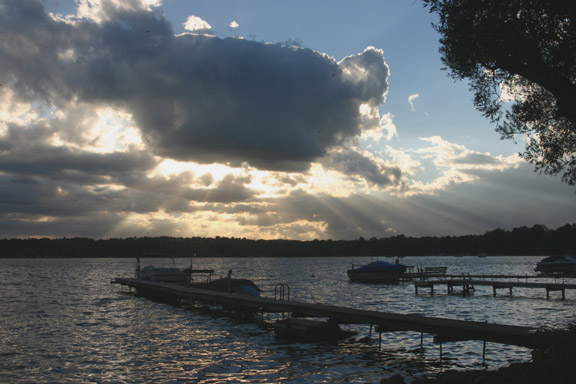
Figure 1a: Crepuscular rays are caused by holes in the clouds. Note that they converge to the apparent location of the sun in the sky (behind the cloud). According to the hoax advocates, the rays should all appear parallel in the sky, which the photo shows is wrong.
What about the shadows of the rocks? The rocks are irregular in shape, and so is the surface. Rocks lying on the rims of small depressions will cast longer shadows over the depression than they would be on a flat surface. Rocks lying next to a rise will have short shadows. Irregular peaks and vales on the rocks and surface will cause one to misjudge the lengths and directions of shadows. It is very difficult to judge the parallelism of shadows on an uneven, cratered surface. Based on that alone I found no evidence for multiple light sources. Indeed, multiple light sources would cast multiple shadows and no one claims multiple shadows to be found. More anon.
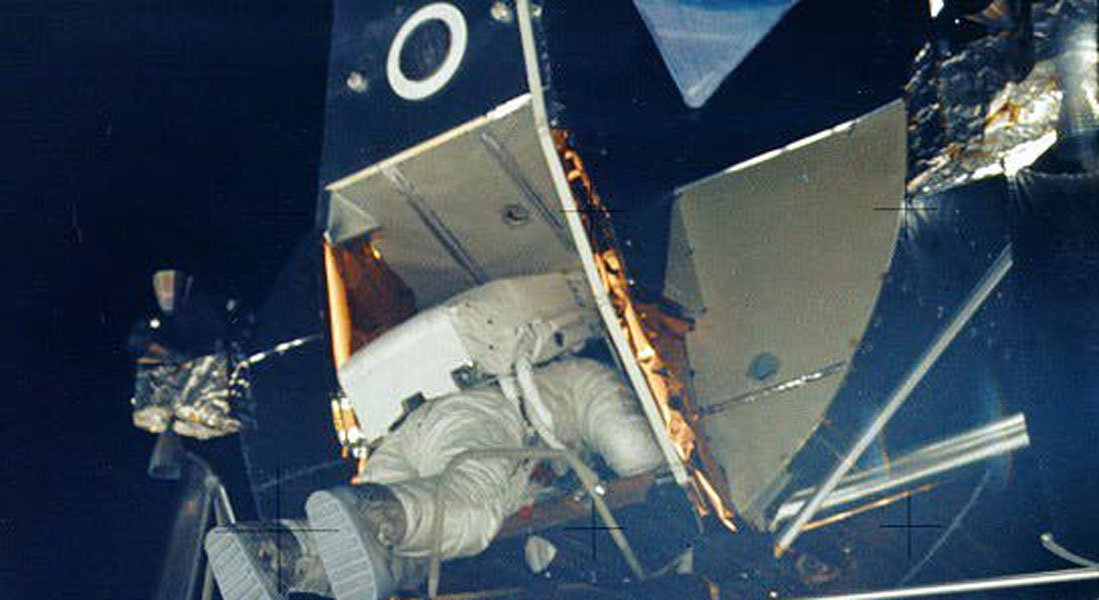
Figure 2:Buz Aldrin starts his descent to the lunar surface. Note how bright his backpack appears. The hoax advocates say it's due to backlighting, but where's the shadow from the alleged light? Neither the backpack nor the hose casts a shadow consistent with the fill-light theory.
Backlighting
There is a series of photos which shows astronaut Buzz Aldrin climbing down the Apollo 11 lunar lander's steps (Figure 2). He is descending in the shadow of the lander, yet one can see details of the lander and his suit seems bright as if it's in direct sunlight. One hoax advocate claimed that it would take a three hour exposure to make the photo so bright. The claim is that the area had to be illuminated by stage lights.
Actually, the higher up one goes off the surface of the moon, the more of the moon's surface comes into view and the more of its reflected light hits from the surrounding moonscape. It is not surprising then that Aldrin's oxygen pack (which looks like a white backpack) which is pointing skyward, is darker than its underside which catches the light from the lunar surface. Now it could be argued that that's consistent with the flood-light speculation, too; but in that case we should see the shadow cast by the flood light. In none of the photos is there any evidence of a shadow cast by the hypothetical fill-light.
If the lunar landing photos were shot in a studio with flood lights and fill lights, there should be multiple shadows in many of the photos. As it is, there is no evidence of such multiple shadows. Besides, why is the lunar landscape, also supposedly lit by floodlights, overexposed in that photo? Studio lighting would make the landscape and the lander the same brightness.
A related phenomenon is the one seen in the cover photo. The lunar landscape seems to be bright near the center of the photo and then seems to fade in brightness as one gets to the edges of the photo. One only finds this in photos where the astronauts are prominent. Their white suits outshine the lunar surface and so one sees a differential reflection from the dust on the moon. The dust reflects light that hits it directly more than it reflects light which hits at an angle. Think of it this way. As the light hits a dust particle in a deep dusty surface obliquely, the reflected light is absorbed or scattered in different directions by neighboring dust particles. This is why in short exposures such as ones in which the white astronauts are prominent, the darkening is prominent. In photos where the astronauts are less prominent, the fading is barely noticeable.
Of course, a professional photo printer will "burn in" the image by letting the enlarger light shine through a small, coin-size hole in cardboard while constantly moving the card, lengthening the time that the enlarger light falls on the shaded area, thus making it look brighter on the print. It is evident that such techniques have been used on some of these prints.
Flatness of the lunar surface
This claim is not directly made by the conspiratorial advocates, but it is indirectly made insofar that they claim flat surfaces are evenly lit. Flat surfaces are not evenly lit if they are lit by spotlights, only if they are lit by sunlight. The latter is their claim, and we are to conclude that the unevenly lit surface of the moon photos must be due to multiple lights mounted around the perimeter of the set.
We've mentioned above that in such cases we should see multiple shadows, which we do not see, but more to the point here is the observation that the surface in the photos is anything but flat. In some photos we see an astronaut standing inside a crater and the camera view looking down on him (see cover). Now this shows a hypocrisy of the NASA critics, when such a shot does not show the astronaut's feet, then they do not allow that the subject is standing on a crater or the cameraman is standing on a hillock, but the hoaxers claim that the photographer is standing on a ladder above the "flat" surface.
Beyond that, we see long and short shadows in accord with the shadows falling on hills and vales. All in all, there is no evidence here which even favors, let alone proves, the hoaxers' argument that uneven surface lighting and uneven shadow lengths are due to multiple lights.
Missing stars
"Why are there no stars in the lunar sky?" ask the hoaxers. After all, if there's no air on the moon then one can see stars in daylight. Certainly the statement is true, but that doesn't mean that you should expect to see any stars in the photos. To demonstrate the truth of this to yourself, take one of these three photos on a starry moonless night.
- Take a picture of the starry dark night sky with the flash on. The photography shop won't print the blank negative, so you'll have to look at the negative to see that there are no stars there.
- Again on a starry night, take a photo of someone under a street light. You'll see no stars in the sky.
- If you don't have an automatic camera, set your exposure time for 1/125 second at f/8 and take a photo of the stars. This is the exposure time which roughly corresponds to the settings used on the moon.
If you think that the atmosphere dims starlight a lot here on earth -- which it doesn't if the stars are any distance above the horizon -- go ahead and set your f-stop all the way open, place your camera on a tripod, and shoot for a quarter of a second. You'll still not see any stars. Even if you exposed the film for several seconds you won't notice the stars unless you happen to have one of the very brightest or a planet in the viewfinder. You'll have to expose the film for fifteen to sixty seconds to record any more than a few stars. So we see that the lack of stars in the photos argument is bogus.
Cross hair problems
For calibration purposes, the specially-designed Hasselblad 500 EL/70 camera (which held 100 exposure two-and-a-quarter inch square negative film) placed dark cross hairs on the negative. These cross hairs provide two opportunities to fuel the critics claims. The first and least significant involves the series in which Aldrin descends the LM's steps. The photo where he is at the very bottom has the alignment of the cross-hairs at an angle to the horizon, yet the photo is printed with the horizon horizontal instead of being aligned with the cross hairs. Some of the critics claim that the cross hairs were added later and that in this case the sheet was improperly aligned. This is claimed after making a big deal about how difficult it is to hold the camera level while wearing a space suit. Does it not occur to them that it would be easier to leave the cross-hairs off in the first place than to add them later, especially if the whole thing is a hoax? And why is it that all of a sudden the camera is always held perfectly level when earlier it was claimed that such is impossible? The picture is cropped and leveled, pure and simple. Evidence? The negative is square, but this photo is always printed as a rectangle.

Figure 3: Part of the lunar excursion module or rover appears in front of the cross hair on the left. Was this the printer's way of telling the world that the landing was a hoax or is it an artefact of computer enhancement?
The second objection involves one or two cases where the cross hairs fall behind an object (Figure 3). Invariably the object is overexposed on the photo. Most photographers know that overexposure will overwhelm subtle details in a photo. In particular, the light in the overexposed negative will bounce off the back of the negative and on its way back to the surface expose the cross hairs. That is why images of bright stars will look larger than fainter stars. Indeed, the star's light may be so abundant that we can see more than one bounce from the back to the front surface of the negative then back to the rear surface and off the rear surface back to the front. Such stars have a ring around them as a result (Figure 4).
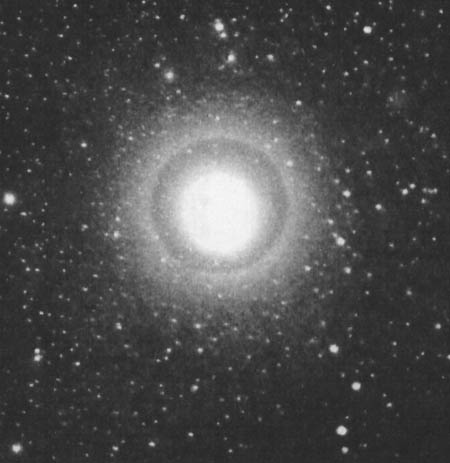
Figure 4: at right, a photographic ring about a star.
Besides overexposure there is a second reason why cross hairs might disappear. If the photos are processed by computer, the image editing software, which takes the average of the pixels (picture elements or dots) surrounding a given pixel may erase the cross hair through a bright region simply because the presence of the cross hair looks inconsistent with the photographic region in which it is found, which, indeed, it is.
The mysterious van Allen belts
The van Allen belts are clouds of charged particles held temporarily captive by the earth's magnetic field. These particles are concentrated more towards the poles and less at the equator. The particles from the van Allen belts are responsible for most aurorae.
Some critics of the moon landings claim that the astronauts could not have survived passing through the van Allen belts; they would have died instantly of radiation poisoning. One claims that six feet of lead shielding would need to have surrounded the space craft in order for them to survive.
Now the six feet of shielding rings a bell. Back in the sixties I recall reading a book, then recently published, about the unlikelihood of space travel. The book mentioned that for a trip to the nearest star, Alpha Centauri, it would take some 200,000 years, and that six feet of lead shielding would be needed to protect the generations of travelers from the harmful effects of cosmic rays over their respective lifetimes. Since the van Allen belts don't even reach to the moon, let alone the nearest star, the reference falls short of supporting the hoaxers' claim. At the turn of the twentieth century people used to spend hours before fluoroscopes before they discovered the dangers of radiation damage. These people absorbed much more radiation than the astronauts experienced from the equatorial regions of the van Allen belts. It took years for the effects to manifest themselves. So there is neither evidence nor authority behind the hoaxers' claim that six feet of lead shielding is needed to survive a pass through the van Allen belts.
Why unexpected results?
Now consider some evidence which belies the Hollywood production theory. Hollywood's concept of the moon's surface can be seen in films of the time of the landings, films ranging from early renditions of Jules Vern's journey to the moon through Destination Moon. Figure 5 shows a scientist's idea of what the surface of the moon looked like in 1963. The reader will note that these don't look like the moon photos. Scientist viewed the moon as made up of large lava fields. If the entire space program was staged, then we would expect a scene showing overlapping lava flows such as seen in figure 5, or some combination of Hollywood moon and New Mexican lava beds, but that's not what we see in the photos. It seems that something must have gone to the moon or we'd see what was expected.
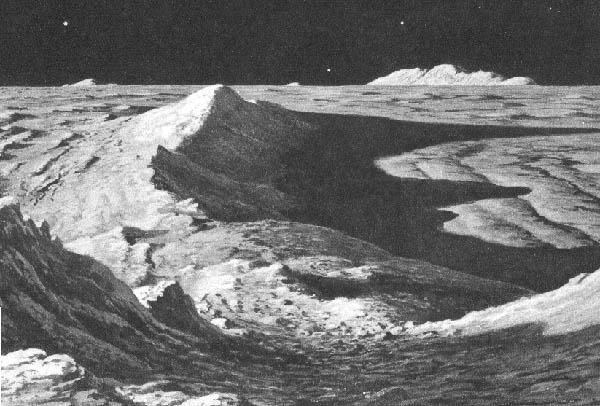
Figure 5: The typical lunar surface as envisioned by scientists in 1962. Note the lava flow "waves" at right.(1)
Of course, it could be that some vehicles did go to the moon and changed the Hollywood artists' view. The United States sent Ranger craft crashing onto the surface of the moon taking photos as they went down. These were followed by the landers, both Soviet and American, which gave close-up views of the lunar surface. One could argue that these taught NASA how to stage the various Apollo landings, but then we are left with the moon rocks and dust. The texture and stickiness of the lunar dust was unexpected. One hoax advocate claims that the soil the supposed astronauts walked on was wet or damp all of the time to give the impression of deep dust prints (Figure 6). Evolutionists expected deep pools of dust in the low-lying areas, but no such pools were found. The amount of dust is consistent with a 6,000-year old surface, not with the billions of years old surface which the science of the time expected.
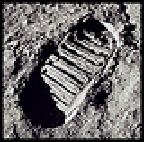 Figure 6:
(at left) footprint on the moon.
Figure 6:
(at left) footprint on the moon.
Then there are the moon rocks. Some of these were radiometrically dated at only a few to a hundred million years old. Laboratory produced rocks, prescribed by the current science would not have produced such enigmatic and young rocks as were returned by the landers.
Oscar-winning special effects specialist Dennis Muren did the special effects for such films as Jurassic Park, The Abyss, Star Wars, and Terminator 2. He expressed his opinion about the moon films this way:
I've always been acutely aware of what's fake and what's real, and the moon landings were definitely real. Look at 2001 or Destination Moon or Capricorn One or any other space movie: everybody was wrong. That wasn't the way the moon looked at all. There was a very unusual sheen to the images from the moon, in the way that the light reflected in the camera, that is literally out of this world. Nobody could have faked that. And it's got very little to do with advanced technology or computing power.(2)
Conclusion
In this article we have looked only at the major claims made by those who think that NASA faked the moon landings. Only a few of the lesser claims were examined and some, like the angle of the flag and the burned-in image of the American flag on the lander, I've ignored altogether. These are too easy to counter.
In general we found that hoax advocates are ignorant of photographic printing techniques, photo enhancement techniques, and computer photo enhancement techniques. They also lack a basic understanding of modern astronomy and selenology (study of the moon's surface and rocks), no, not enough to properly state what astronomy and selenology have to say about the moon, and thus certainly not enough to offer intelligent critique. My most pessimistic appraisal of the moon hoax phenomenon is that it is designed to capitalize on the current dissatisfaction among the general American public with its cowardly, government leadership, cowed by a handful of satanic men in high places (Ephesians 6:12). Increasingly American Christians are being taken in by this hoax, and they get quite belligerent if you disagree. On the whole, American Christianity spends its money and acclaim on things and people who make merchandise of them by telling them what they want to hear, and by selling them worldly goods in "christian" wrapping paper. Lord, have mercy on us.
1. Rudeaux, Lucien and G. de Vaucouleurs, 1962. Larousse Encyclopedia of Astronomy, second ed., pg. 153.
2. Bakel, Rogier van, 1997. "Did NASA Moon the World?" Fortean Times, No. 97, p.
24.